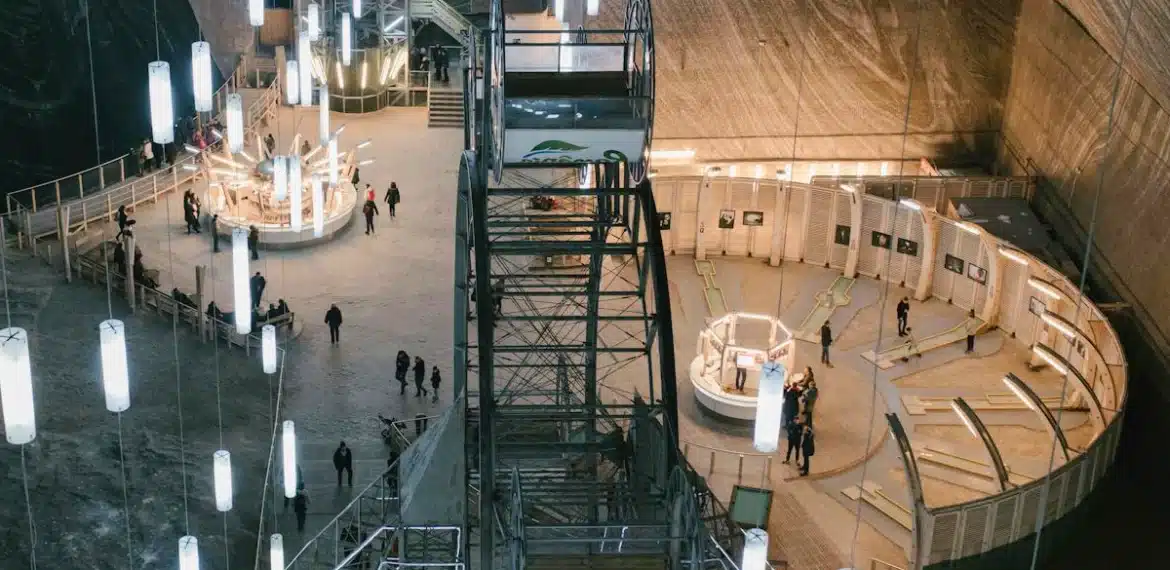Contents
- 1 Wieliczka Salt Mine in Poland
- 2 Salina Turda Salt Mine
- 3 Berchtesgaden Salt Mine in Germany
- 4 Bochnia Royal Salt Mine in Poland
- 5 Cardona Salt Mountain in Spain
- 6 Slanic Mine in Romania
- 7 A Journey Through European Salt Mines: The Hidden World Beneath
- 8 The Legacy of Salt Mines in Europe: From Ancient Times to Modern Wonders
Explore the fascinating world of salt mines, a subterranean marvel that has captivated visitors for centuries. Poland is home to some of the most renowned salt mines in the world, including the historic Wieliczka and Bochnia Royal Salt Mines. These medieval treasures offer a unique glimpse into the past, showcasing the rich history and significance of salt mining in the region. Join us on a journey deep beneath the Earth’s surface to uncover the secrets of these ancient salt mines.
Wieliczka Salt Mine in Poland

The Wieliczka Salt Mine and the Saltworks Castle, located in southern Poland, stands as a monumental testament to the ingenuity and endurance of human craftsmanship and the natural beauty of salt formations. Operated continuously for over 700 years, this mine is not only one of the largest salt mines in Europe but also a significant cultural and historical emblem, recognised as a UNESCO World Heritage site. The Wieliczka Salt Mine tourist route includes a plethora of salt monuments and statues, works of art carved directly into salt deposits, and an expansive list of preserved mining machinery. The famous underground salt Catholic church of St. Kinga, the patron saint of miners, is an object of thousands of pilgrimages every year. A ceremonial mass is held there on a yearly basis.
Salina Turda Salt Mine
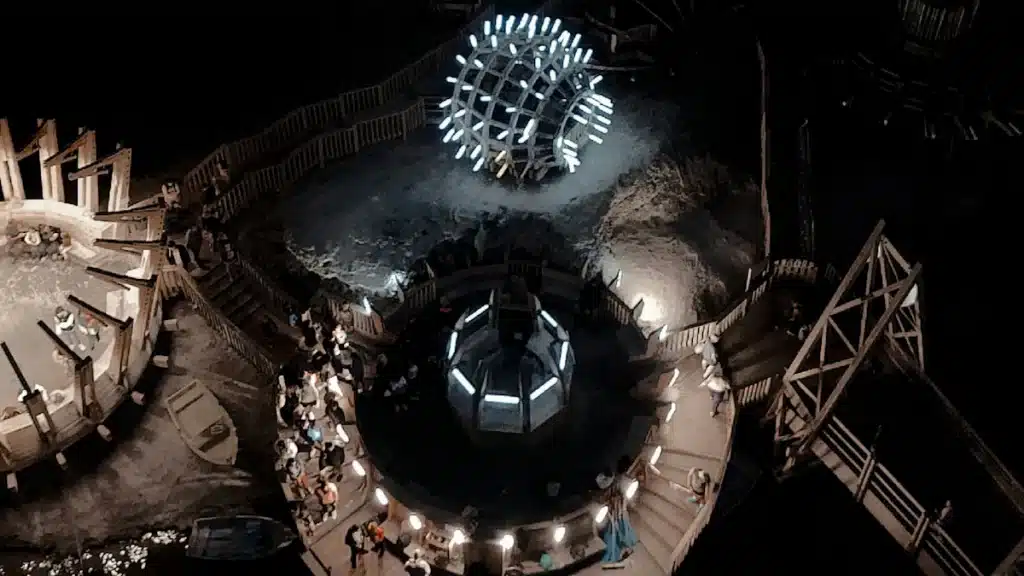
Salina Turda Mine is nestled in the heart of Transylvania and allegedly, it has been used for salt extraction since the classical period. The first records of salt mining in Salina Turda are dated to 1075, and it has been active all the way until 1932, making it one of the longest operating salt mines in history. The most popular attractions include the conical main hall of Iosif Mine and the underground lake with a striking art installation on an island in Terezia Mine. Since its renovation in the early 2010s, it has become one of the most popular tourist destinations for Romanian and foreign tourists alike.
Berchtesgaden Salt Mine in Germany
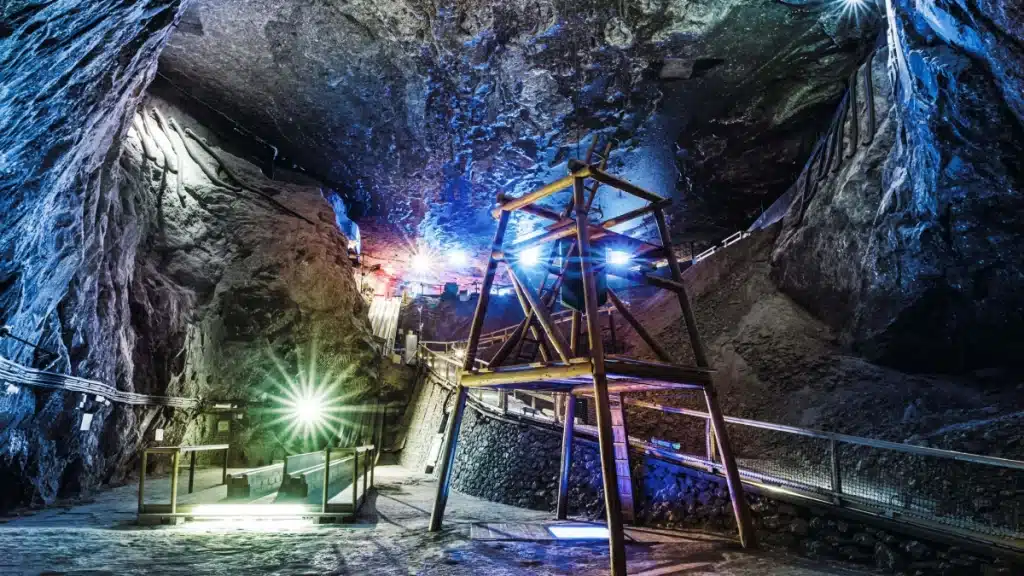
The Salzbergwerk Berchtesgaden is an active salt mine with a dedicated tourist route opened in 1880. It has been heavily modernised in 2007 and now features a mining train line, a usable ferry crossing through an underground salt lake and miners’ slides which guarantee a fun experience for the whole family.
Bochnia Royal Salt Mine in Poland

The Bochnia Salt Mine is located in Lesser Poland, around 40km away from the city of Kraków. In there, you’ll find multiple well-preserved pieces of machinery from the times of industrial revolution, and a maze of corridors and tunnels spanning over 240 km. The famous Wazyn Chamber is known as an underground sanatorium where you can enjoy air with high levels of sodium and potassium, which is highly beneficial for your respiratory system. It’s recognised as a UNESCO World Heritage Site along with its sister facility in Wieliczka.
Cardona Salt Mountain in Spain
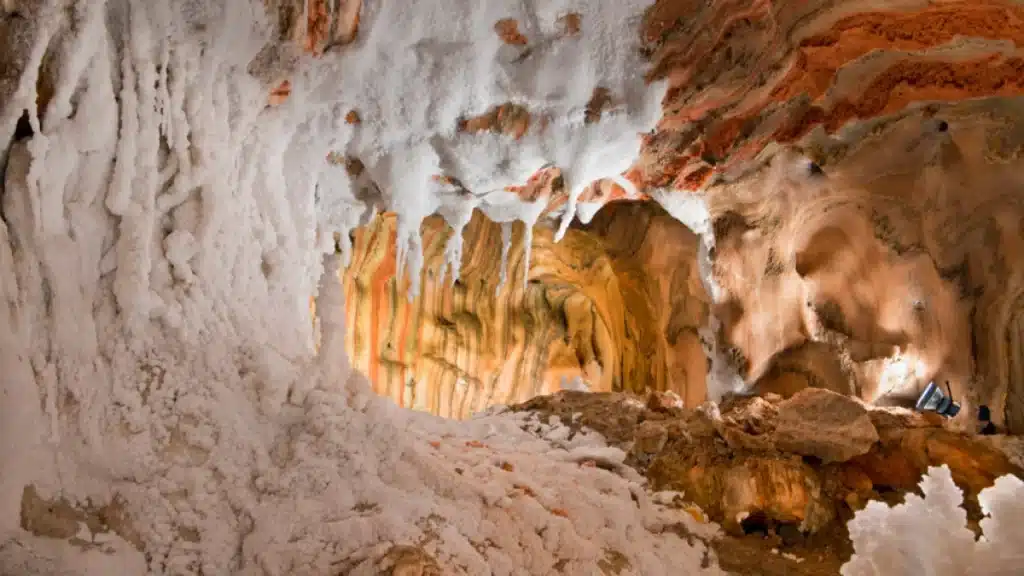
Standing tall in the very centre of Catalonia is the Salt Mountain Cultural Park in Cardona. Upon visiting, you’ll be enthralled by the beautiful salt outcrops and exceptional exhibition of the varied geology found inside the tunnels. Cardona is famed for its culture of creating salt art – it’s recommended to check out the art gallery of Josep Arnau, or even get a tour of one of the workshops of the local salt sculptors.
Slanic Mine in Romania
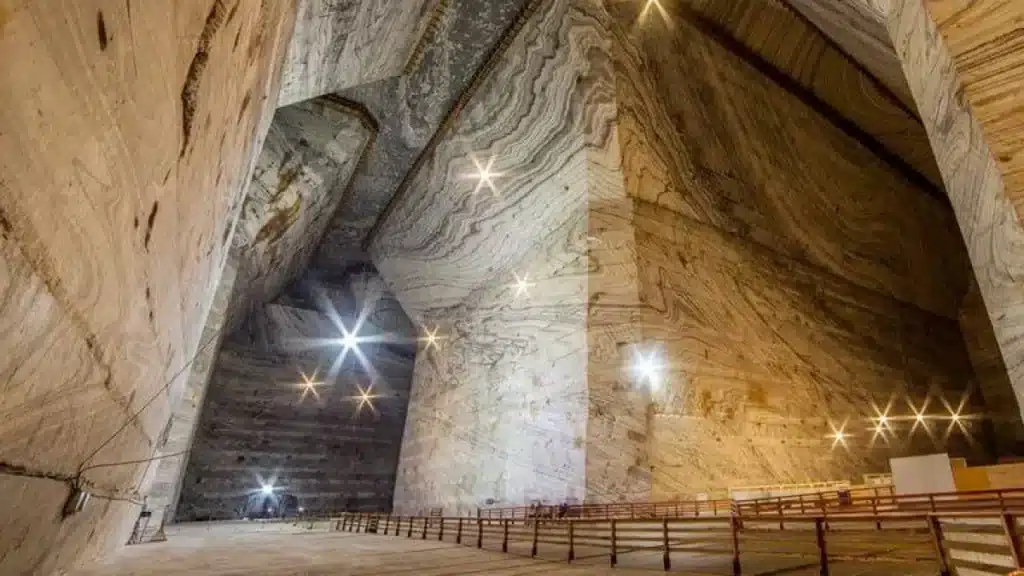
Even though the Slanic Mine was opened in the XX century, it’s rapid expansion made it the largest salt mine in Europe. Many tourists come to the mine to enjoy its grand halls with some of the purest air you could ever breathe. There is so much space some areas are even accessible by car!
A Journey Through European Salt Mines: The Hidden World Beneath
Embarking on a journey through Europe’s salt mines unveils a hidden world beneath our feet, a realm where history and geology intertwine to narrate a story of human endeavour and natural wonder. The Wieliczka and Bochnia Royal Salt Mines, nestled in the heart of southern Poland, are emblematic of this underground legacy, offering a glimpse into the depths where miners have toiled to extract quantities of salt since the medieval era. Recognised on the UNESCO World Heritage list, these mines are not only celebrated for being among the largest salt mines in Europe but also for their profound cultural and historical significance. The Wieliczka Salt Mine, in particular, is renowned for its breathtaking salt sculptures and the majestic Saltworks Castle in Wieliczka, which together with the Bochnia Royal Salt Mines, illustrate the symbiotic relationship between the mine and the Saltworks Castle. This journey deep underground reveals the enduring legacy and the intricate beauty of salt in Wieliczka and Bochnia, making it a cornerstone of Poland’s heritage and a testament to the ingenuity of its people.
The Legacy of Salt Mines in Europe: From Ancient Times to Modern Wonders
The story of salt extends far beyond its role in the kitchen, weaving through the annals of history as a precious commodity that has shaped economies, cultures, and even empires. The Wieliczka and Bochnia Royal Salt Mines, nestled in the heart of southern Poland, stand as living museums to this enduring legacy. These mines, with their origins tracing back to the 13th century until the late 20th century, have produced billions of tons of salt, playing a pivotal role in the region’s prosperity. The Kraków Saltworks in Wieliczka, a symbol of the wealth generated from salt, served not only as a production site but also as a residence for the princes and kings who sought to control this invaluable resource. The evolution of these mines from essential industrial sites to revered UNESCO World Heritage sites illustrates the transformation of salt from a vital economic asset to a cultural and historical treasure.
